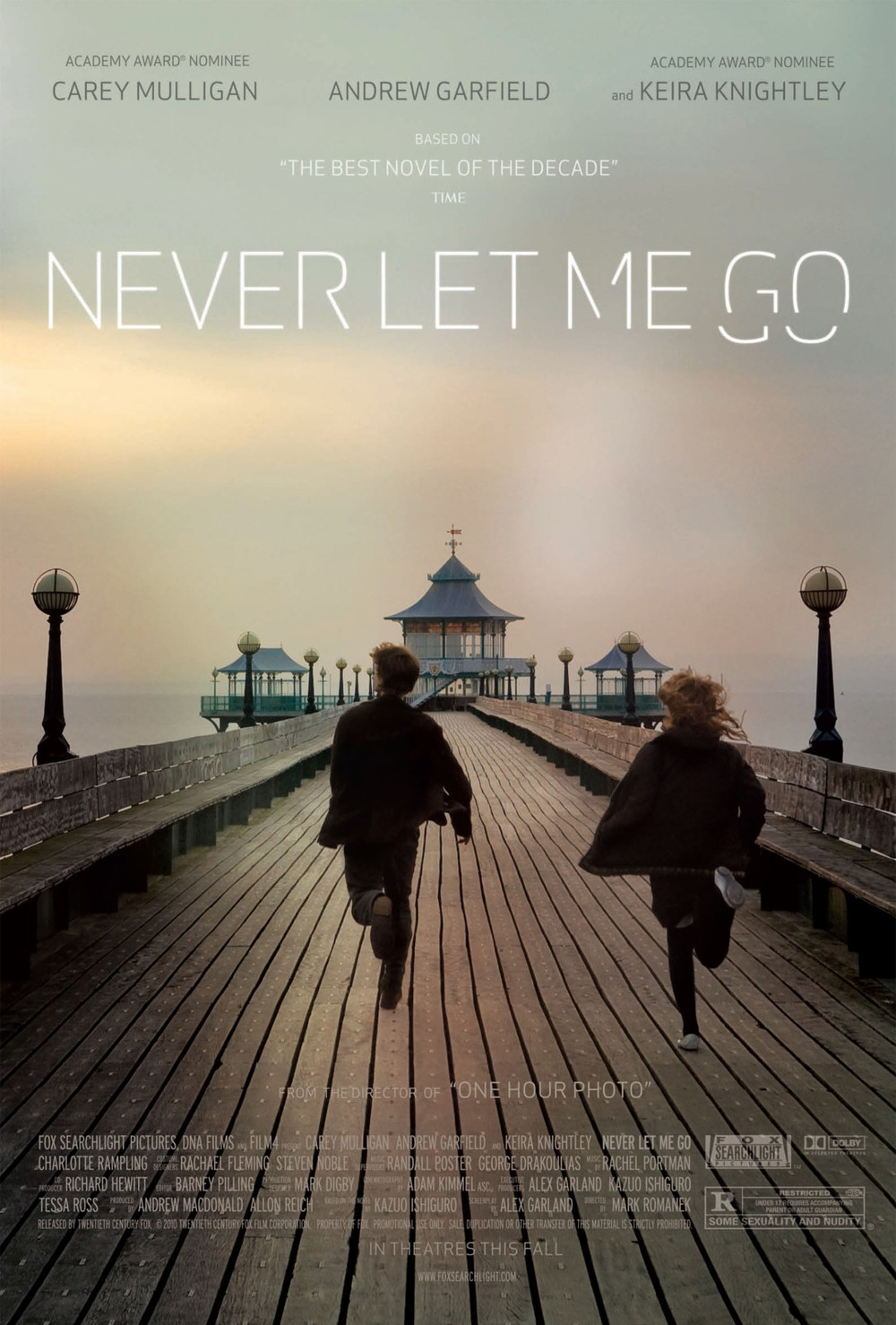
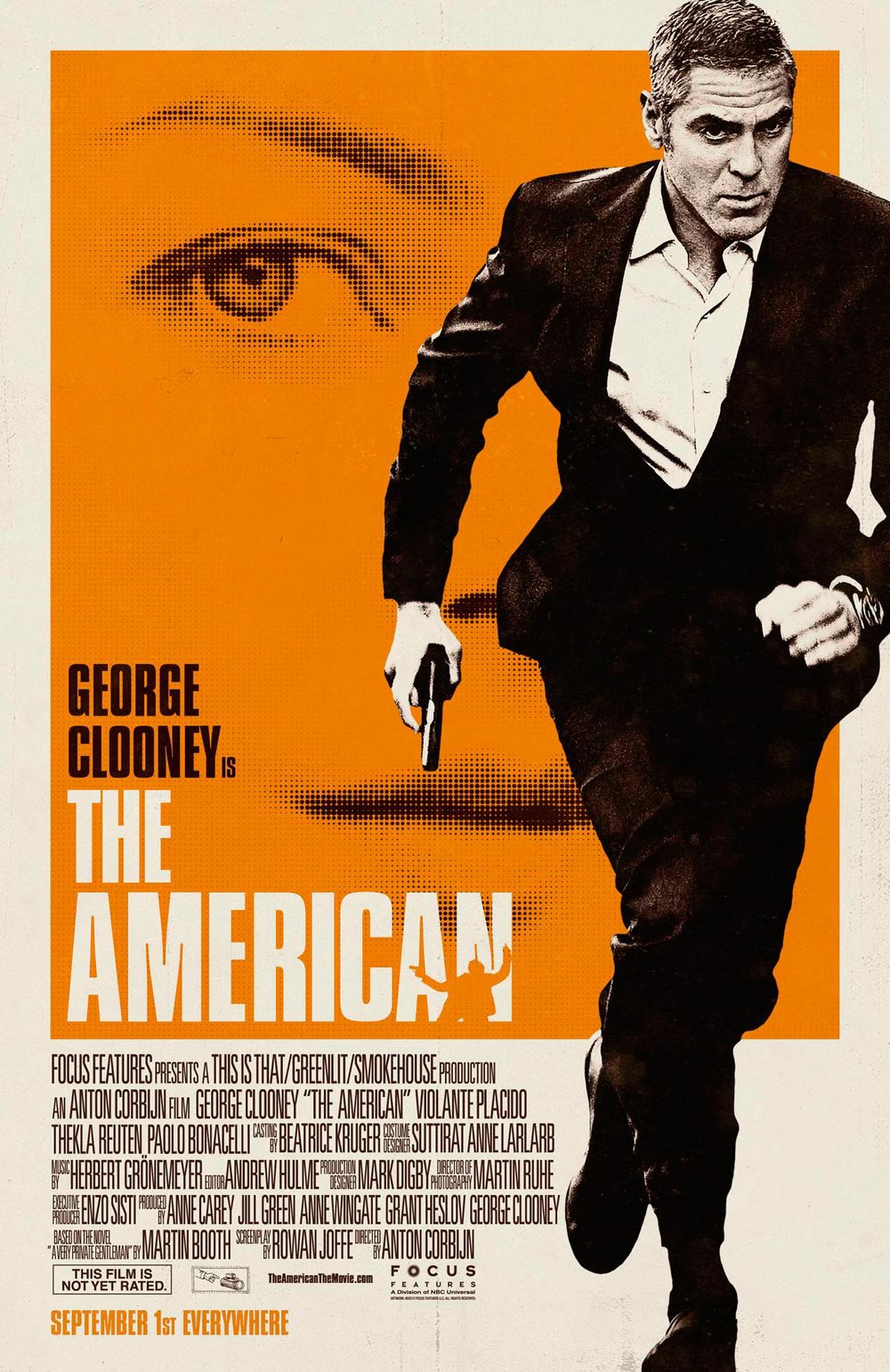
Finally, two good movies in 2010! There will be more to follow (Carlos, The Social Network, Armadillo, The Last Train Home). But these are the first two I have seen in 2010 that pass the 'good' threshold. Oh, I could also give honorable mention to Robert Rodriguez' Machete, since it delivered what it promised, and that was an explosive, raunchy late 1970s-style exploitation film.
But my focus is on these two very good films. Both are existentialist, in a way. But both are serious, highbrow stories that I think are meant to be consumed in completely different ways. And perhaps not coincidentally, both are from acclaimed music video directors, whose works have been deemed good enough to immortalize on collector DVDs.
I'll tackle the straighter film first - the long-awaited adaptation of Kazuo Ishiguro's 2005 novel, Never Let Me Go.
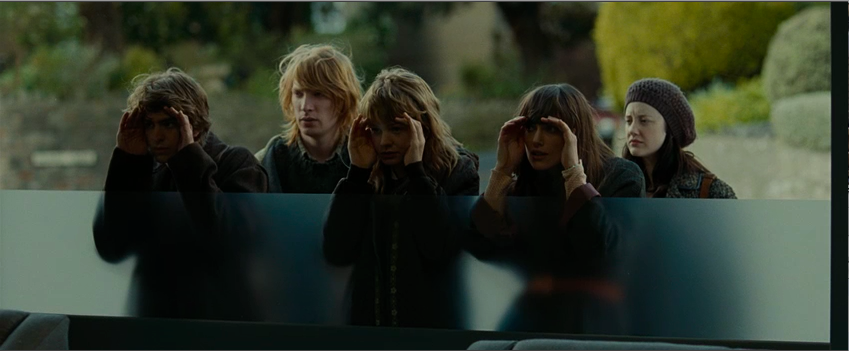
Mark Romanek has directed some of the most memorable and technically advanced music videos of the last 20 years. His most memorable works include "Closer" (Nine Inch Nails, 1994), "Rain" (Madonna, 1993), "Are You Gonna Go My Way" (Lenny Kravitz, 1993), "Devil's Haircut" (Beck, 1996), "99 Problems" (Jay-Z, 2004), "Criminal" (Fiona Apple, 1997), and "Scream" (Michael & Janet Jackson, 1995), the most expensive music video of the 1990s.
When Romanek finally made his second feature film, One Hour Photo (2002), it was predictably strong, if a little dated in feel (who still shoots their family photos using 35mm film?). But that Hitchcokian thriller starring Robin Williams in one of his best performances assured that Romanek would remain a feature director for the foreseeable future. And so, Never Let Me Go is his third feature in 25 years.
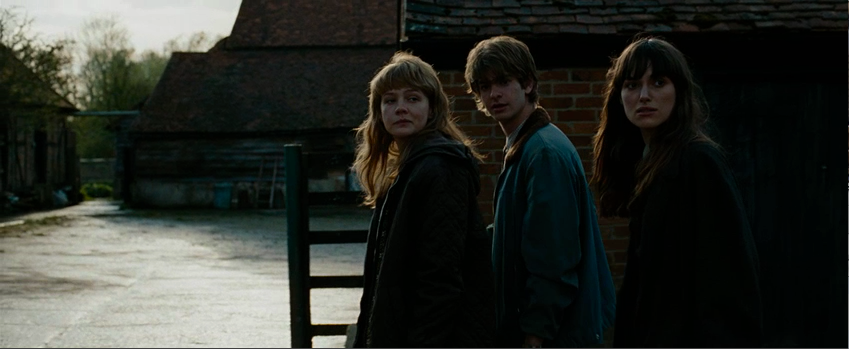
Aside from three irritating changes from the novel's plot, the movie adaptation of Never Let Me Go is very well done. The performances from Carey Mulligan, Kiera Knightley, and Andrew Garfield are pitch perfect. The cinematography is, at times, outstanding. Costume design is strong as well.
Getting back to the plot changes (that's a play on the novel's plot narrative device, by the way), I just wish the Norfolk music tape subplot had remained intact. I had expected the film to tell the story at a brisk pace, and I was correct. So why didn't the movie stay completely faithful to the novel, with the exception of the subplot involving Kathy's music tape? In the novel, she buys the tape herself as a young teenager, loses it, and then with Tommy's help, finds a replacement during the key road trip to Norfolk at age 19. In the movie, Tommy buys her the original tape, and it is never lost. While I can see how this change can establish the love triangle between Kathy, Ruth, and Tommy, I think it weakens the whole significance of the Norfolk road trip. That trip represented a turning point for the three main characters, but without the mission to locate and buy a replacement music cassette, Tommy and Kathy are left with nothing to do and nothing to talk about, thus diminishing their character and relationship development. I was puzzled by that.
Readers of the novel will also know that Kathy's music cassette establishes a relationship between her and the Helsham School art curator, "Madame." But the movie's love triangle emphasis squashes that touching subplot in the novel.
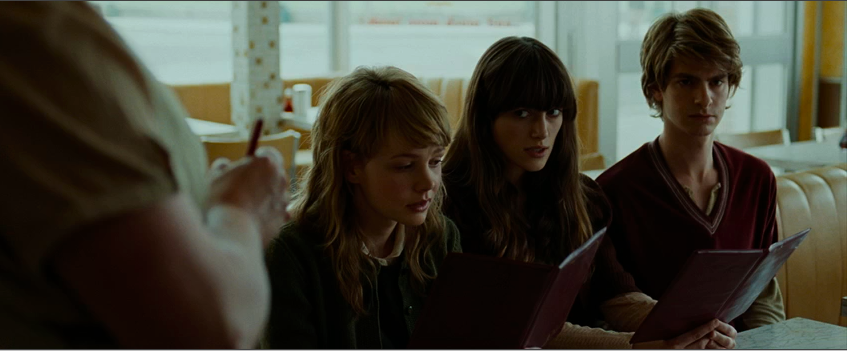
As I've said before, artists are free to make any choices they wish. But I really expected the movie to follow the novel, given that Ishiguro was an executive producer, and his fellow EP wrote the screenplay.
But despite the changes, it is not as if the movie lacks emotional impact. Kathy H. doesn't have a whole lot to do, and the same goes for Carey Mulligan in the movie. But give her credit for delivering a moving, sad performance, as the only character who sheds tears for herself and her fellow Helsham classmates.
It is also Keira Knightley’s best performance to date (and a brave one, as she is a total bitch and her bad teeth are at last revealed).
Mark Romanek got the tone and look completely correct: The color palette, the feel, the theme, and the stifling sense of dread. There is no escaping the life set for these young people. There is no escaping England.
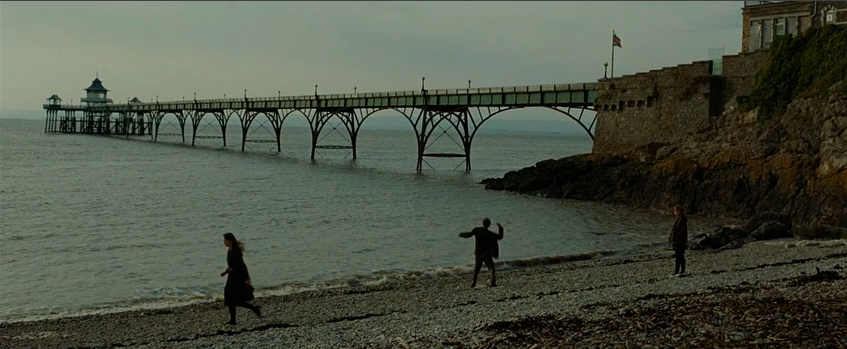
Knightley's roles in the Pirates of the Caribbean franchise might be forgotten. She’ll be remembered for her great performance and green dress in Atonement and for this performance in Never Let Me Go. I wouldn’t be at all surprised if she wins an Oscar nomination for Best Supporting Actress.
Never Let Me Go is slowly going wide after opening in New York and L.A.
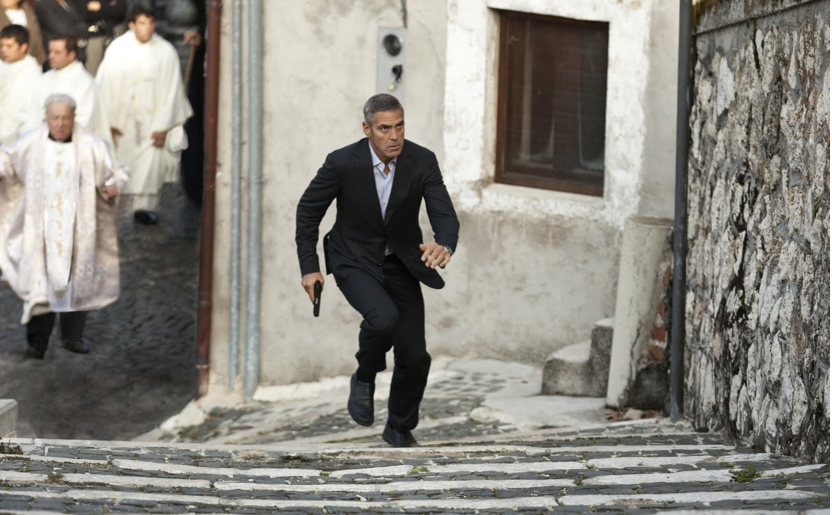
George Clooney is...l'americano
Anton Corbijn is a notable fashion photographer and has directed some of the most memorable and artistic music videos of the last 30 years. Known mainly for grainy black & white photography, he has immortalized rock and film stars such as Keith Richards, Iggy Pop, Sting, Cameron Diaz, Joy Division, Lou Reed, Johnny Depp, Tom Waits, REM, Depeche Mode, and perhaps most notably, U2, with his photography providing the cover art for The Joshua Tree (1987), Rattle & Hum (1988), and Achtung Baby (1991).
He was, of course, the near-exclusive photographer of Joy Division, and his Ian Curtis biopic, Control (2007) was magnificent. For Corbijn, it was a labor of love 27 years in the making.
His most memorable music videos include "Behind The Wheel" (Depeche Mode, 1987), "Enjoy The Silence" (Depeche Mode, 1990), "Hero of the Day" (Metallica, 1996), "Heart Shaped Box" (Nirvana, 1993), and "One" (U2, 1992).
He clearly has an affinity for spaghetti westerns, as he likes to produce videos of bands playing the roles of banditos, cowboys, or outlaws in the desert. He has produced three such videos, actually: "Personal Jesus" (Depeche Mode, 1989), "Mama Said" (Metallica, 1996), and "All These Things That I've Done" (The Killers, 2005).
Which brings us to his sophomore feature, The American.
I really like this movie. But I wonder if it is too harsh to suggest that it is completely unnecessary. We film connoisseurs don't need The American. We need an existentialist, male oriented, European art film like we need another reality TV star.
That's incredibly snobby, isn't it? I don't see wine connoisseurs complain when another Argentinean Malbec or New Zeland Pinot Noir comes to market. They might ignore it, but they seem to welcome increased quantities of the good stuff.
And that's what The American is - another dose of the good stuff. But there's a catch. By "good stuff" I mean the beautiful avant-garde and new wave dramas from the 1960s. Young audiences are going to steer well clear of that, with the exception of a few film students.
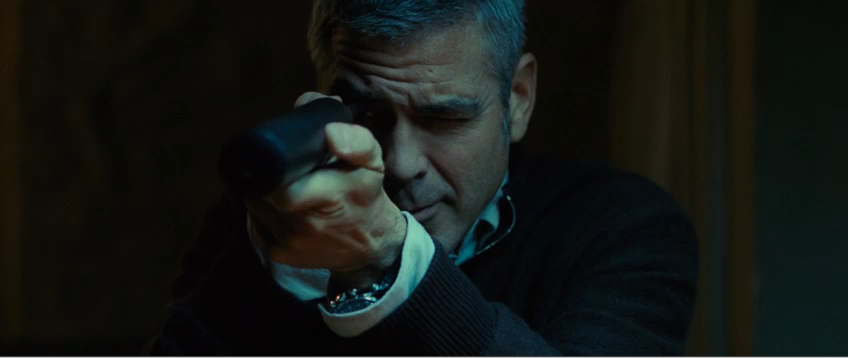
The American is based on a highly successful suspense novel, A Very Private Gentleman, by Martin Booth. Both the novel and the move have the same main character and general plot. Clark, a middle aged Lee Marvin-like character, is known in his business as a 'shadow dweller.' Clark goes by several names, including Jack, and Mr. Butterfly. He is an assassin for hire. But more often, he is hired to procure, construct, and provide weapons for other assassins. Working under cover as a butterfly collector and photographer, he hides in the twisty, maze-like, medieval, northern Italian village of Castel Del Monte, which beautifully serves to keep the suspense and tension fairly high throughout the movie.
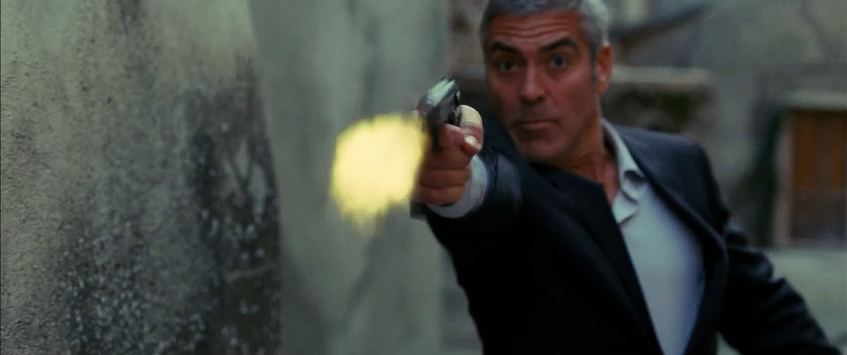
The primary inspiration for the movie adaptation seems to be Jean-Pierre Melville's Le Samouraï (1967). It's a film that has been borrowed and remade often. Here is a list of films inspired by Le Samouraï:
The Driver (Walter Hill, 1978)
The Killer (John Woo, 1989)
Ghost Dog: The Way of the Samurai (Jim Jarmusch, 1999)
You Shoot, I Shoot (Pang Ho-Cheung, 2001)
The Limits of Control (Jim Jarmusch, 2009)
The fact that Jarmusch, a highly original and ultra-cool filmmaker in his own right, made two movies that quote Le Samouraï should tell us a lot about Melville's influence. Interestingly enough, Ghost Dog and The Limits of Control are Jarmush's least-liked films among American critics (although there has been an embrcing of Ghost Dog, lately).
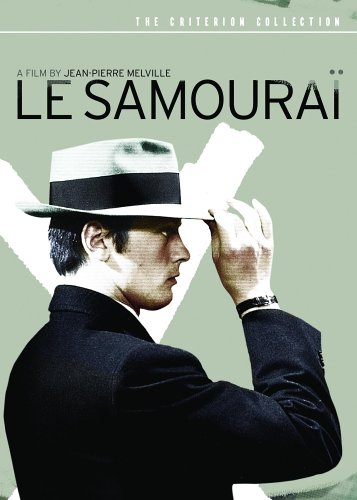
Alain Delon is...Le Samouraï
It goes without saying that existing art influences new art. But in cinema, quotation and reference is not only accepted, it is practically encouraged by the filmmakers and educated film audiences, much to the delight of film scholars and critics.
And so The American does not limit itself to Le Samouraï. It is quite rich and sophisticated in its influences and visuals. There are many elements from Corbijn's own Depeche Mode videos. There are gorgeous overhead shots that invoke travel magazines or car commercials. There is also a very blatant homage to the spaghetti western masterpiece, Once Upon A Time in the West (Leone, 1969).
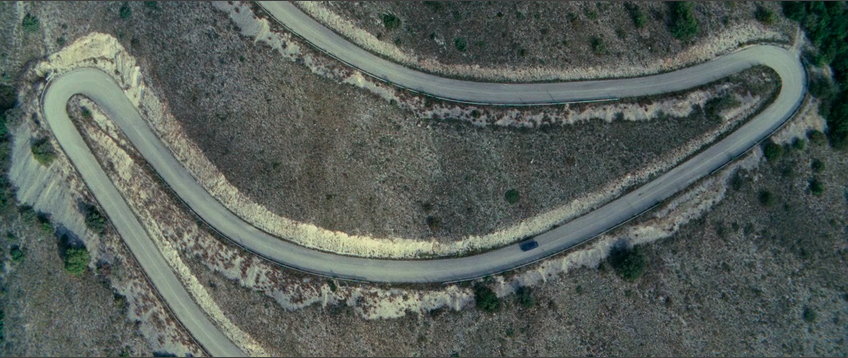
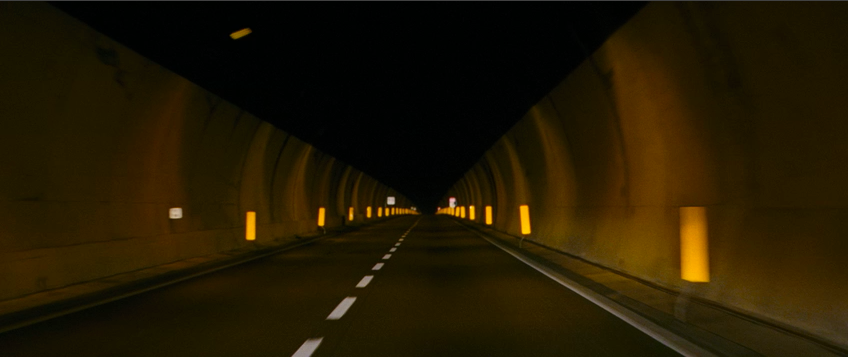
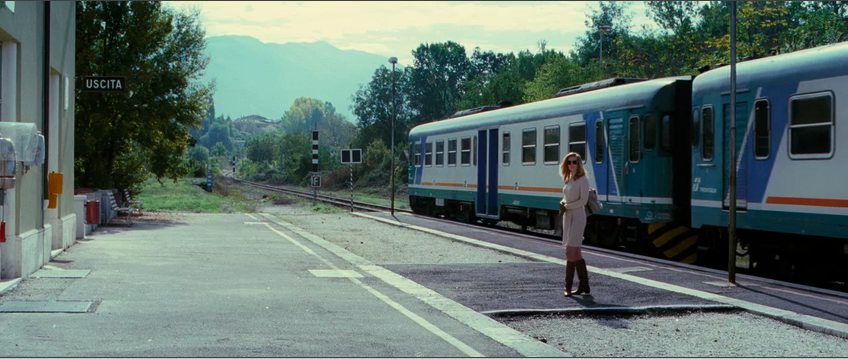
And then there are the women: tall, pretty, continental - who remind me of the leading ladies in about 20 French and Italian films, including Repulsion (Polanski, 1965), The Passenger (Antonioni, 1975), Pickpocket (1959) and Les Biches (Chabrol, 1968).
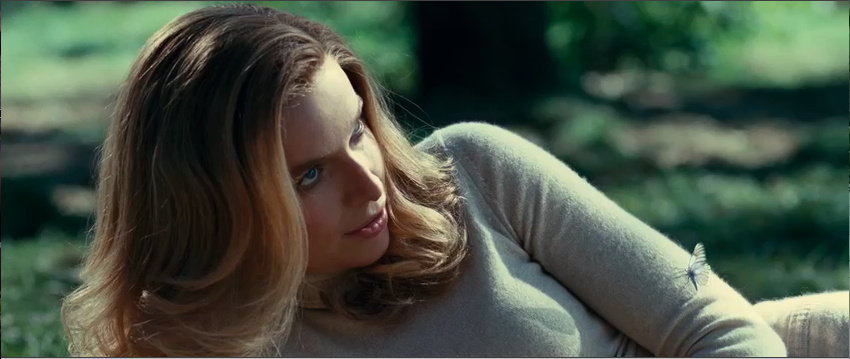
Les Biches (Bad Girls) was marketed as a thriller, but really it was a male fantasy, namely Chabrol's. Leading man Jean-Louis Trintignant would naturally have two impossibly beautiful women (one of whom being the director's wife) fight over him in luxurious St. Tropez. And the same is certainly true with George Clooney. He can't help it that women want him. In The American, they might both want to kill him and bed him (just not in that order).
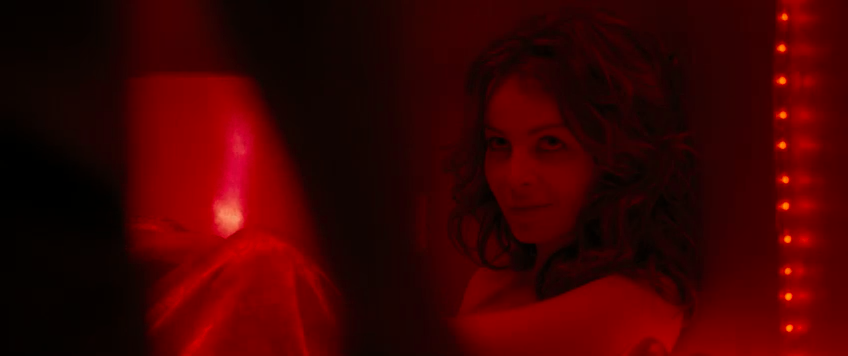
And that's where my slightly subversive read of The American comes into play. As beautiful, artistic, and pretentious as this movie is, I don't think it is meant to be taken seriously at all. It's an extended fashion spread in Esquire or GQ, in which our male model dodges bad guys and woos long haired women while in his car, on a Vespa, or at an outdoor cafe. This is fashion, not just cinema. And my gosh, is it beautiful.
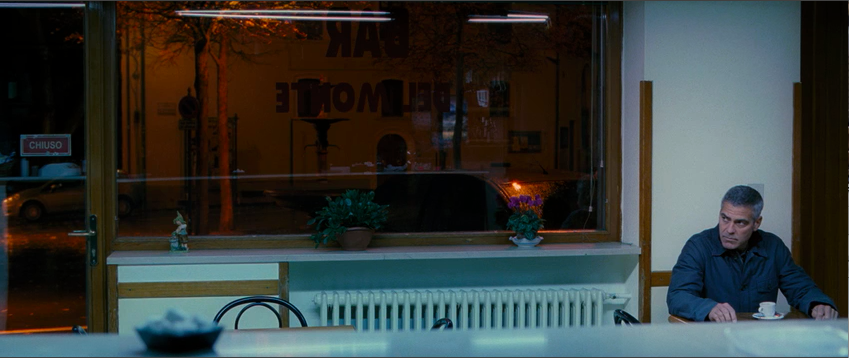
Oh sure, there's a story. The audience is expected to figure out (and I think most film-conscious viewers will figure out) that as movie assassins get older (if they make it that far), it becomes impossible to peacefully leave the business. Surely all that killing and double crossing produces enemies who hide in the shadows. In every European town and village the elder assassin hides out, he is never safe. It is an impossible situation. But at least there is some time to enjoy fine food, wine, liquor, coffee, and women - hence the reason more than one American critic compared this movie to Eat Pray Love, which I find hilarious.
George Clooney's Clark is hired by a man we don't know, to construct a rife for a female assassin we don't know, to do a high profile killing we'll never know, all for reasons unexplained, leaving many questions that will never be answered. Sounds like a blast, right?
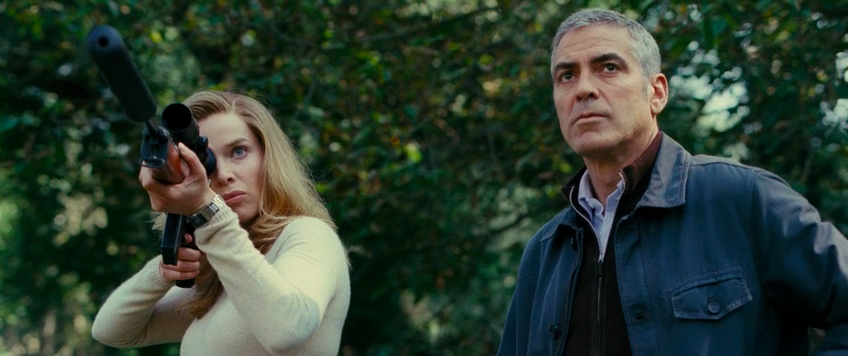
Clark's handler is played by Belgian actor, Johan Leysen, who resembles an elderly Daniel Craig or Steve McQueen (brilliant!). The female assassin is played by the steel-eyed, sextilingual Finnish actress Irina Björklund. This really is a European art house film that happens to star America's most recognizable leading man. You could argue that hasn't happened since Robert De Niro in 1900 (Bertolucci, 1976).
I think if a viewer puts away his or her expectation of a heart pounding Hollywood thriller aside, and realizes that it's both an homage to 1960s cinema and highbrow eye candy, the film becomes extremely enjoyable. I think the film fully succeeds at what it declares to be - a pretentious avant-garde thriller. I can't knock this movie for doing exactly what it set out to do. And besides, I liked it at lot. Sure, I already own Le Samouraï and Ghost Dog on DVD. I've seen this movie before. But I'm an older, nostalgic film scholar. I remember when films like this were taken seriously, despite having plots that were equally thin and flawed.
Screenwriter Rowan Joffe (28 Weeks Later, and the son of Oscar-winner Roland Joffe) did a pretty good job modeling Clark on Clint Eastwood's characters in Leone's westerns. The screenplay often dictates the cuts - usually after a character says something crucial or appropriate to end a scene. I think the most predictable cut is the scene in which Clark is talking to the village priest over dinner. The priest is trying to get Clark to open up and start confessing his sins. The priest says, "A man can be rich, if he has God in his heart." Clark replies, "I don't think God is very interested in me, Father." Cut. It's the school of screenwriting that includes Michael Mann and Tony Gilroy, and it usually works.
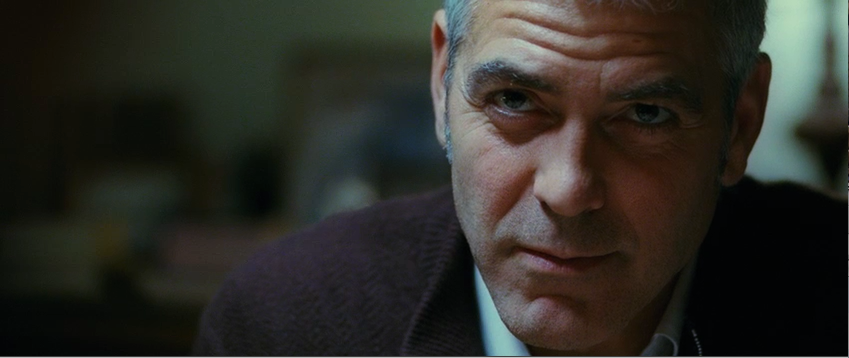 Is Clooney 'smizng'? Has he been listening to Tyra?
Is Clooney 'smizng'? Has he been listening to Tyra?
Just don't expect the minimalist screenplay to answer any questions or rise up to match the visual beauty of this film. As I said, visuals trump the story in this European production. But despite this gap, Anton Corbijn is able to maintain a key element of both the novel and the film, and that is suspense. If the sudden, violent opening doesn't hook you, then the suspense fails. But I think it succeeds. Once it is quickly established that almost everyone who pays attention to Clarke wants him dead, it is easy to get sucked into the film's suspense and have a somewhat thrilling ride as Clarke has to constantly watch his back and erase his tracks.
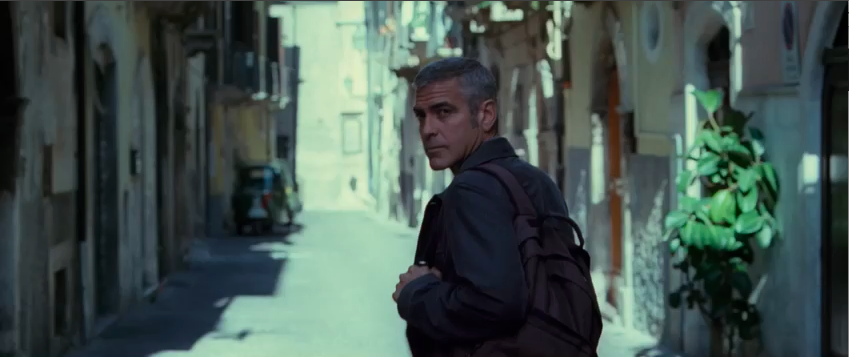
And if the ride doesn't deliver the thrills for everyone, perhaps the generous curves of Violante Placido will entertain the remaining viewers enough to forget that they were tricked into seeing a weird foreign film. You have to admit, "baby got back."
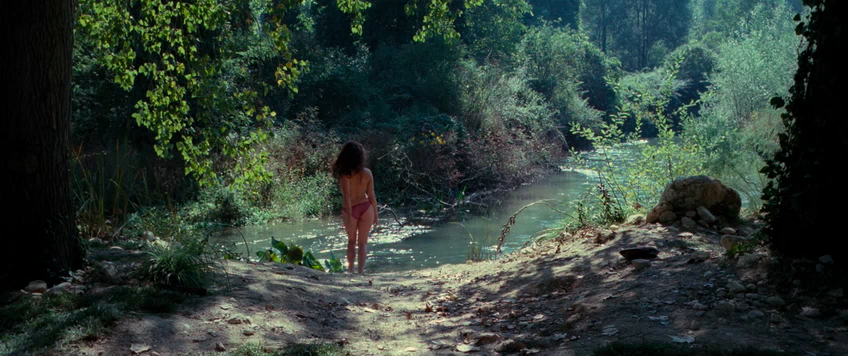 Stop looking at that butt! Did you know her mom played Apollonia in The Godfather Part II at age 17?
Stop looking at that butt! Did you know her mom played Apollonia in The Godfather Part II at age 17?